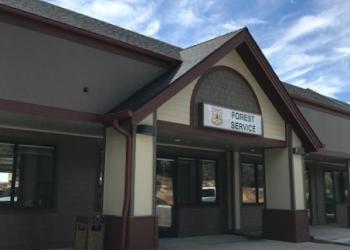Lost Creek Wilderness
Lost Creek Wilderness was officially designated by the Colorado Wilderness Act of 1980 with additions in 1993. Today, it totals 119,790 acres. Elevations range from 8,000 feet to 12,400 feet above sea level. Lost Creek was named after a creek of the same name that repeatedly disappears underground only to reappear again further downstream, where it ultimately becomes Goose Creek.
Lost Creek is accessed by a 136-mile trail network, 105 miles of which are within the wilderness boundary. The trail system traverses tree-lined mountain parks, fascinating rounded granite domes and rare granite arches. Black bears, bighorn sheep, deer, elk and bobcats share the region. Vegetation includes ponderosa, bristlecone and lodgepole pine; aspen; spruce; fir and alpine tundra.
Please help keep wilderness wild by following Leave No Trace practices.
Active Alerts
General Information
Trails
Please stay on the trails. Cutting switchbacks and avoiding wet and muddy sections can cause severe erosion and multiple trail systems. For individuals travelling cross country, remember that alpine tundra is very susceptible to damage. Walk on durable routes of rock or talus when possible. In areas where this is not possible, disperse your use so no two footsteps land on the same spot. In keeping with the character of wilderness, where risk and self-reliance are part of the experience, map and route finding skills are essential.
Camping & Campfires
Take some time when you reach your destination to find the most appropriate site for you and your group. Try not to pick the first site you see, even if you're tired. Look around and choose a site that is protected, not visible from the trail and at least 100 feet from any water source. To minimize impacts, please use an existing site. If you choose to have a campfire, consider the following:
- Large hot fires or concentrations of charcoal and ash can sterilize soils, leaving them unable to sustain plant life.
- Many visitors consider fire rings an eyesore.
- Keep fires small and limit them to evenings or early mornings.
- Avoid having fires above tree line. Dead wood removed from Krummholz (dwarf trees near the timberline) affects their survival.
Water & Waste
All water can carry giardia (a protozoa that affects human intestinal systems and can cause serious illness). Boiling water for at least five minutes, using iodine tablets or filtering can treat water.
Soap, even biodegradable, pollutes the water. Dispose of wash water at least 100 feet away from any water source.
Bury human waste in a hole 6 inches deep and 200 feet away from any water source, trail or campsite. Pack out toilet paper, feminine products and left over food. Please practice Leave No Trace principles.
Wilderness permits are required. Self-issued permits are available at the wilderness boundary free of charge.
Wilderness regulations apply. Visit Wilderness Connect to learn more.
Please remember, dogs must be on a leash at all times.
Contact Phone: 303-275-5610
Address: 30403 Kings Valley Drive, Suite 2-115 Conifer, CO 80433
Phone: 303-275-5610
Hours: Monday-Friday, 8:00 a.m. – 4:30 p.m. (Closed on federal holidays)
Getting There
Elevation
12,430 feet
Directions
Find a map on our Visitor Maps and Guides page or visit Wilderness.net for additional maps and information about wilderness.
Facility and Amenity Information
Restrooms
Restrooms are not available at this site.
Water
Potable water is not available at this site.
Horse/Pack Animal Information
Horse/Pack animals are allowed at this site.
Secure pack stock 100 to 200 feet away from lakes, streams or trails. Use a picket line and move stock often to prevent resource damage.



